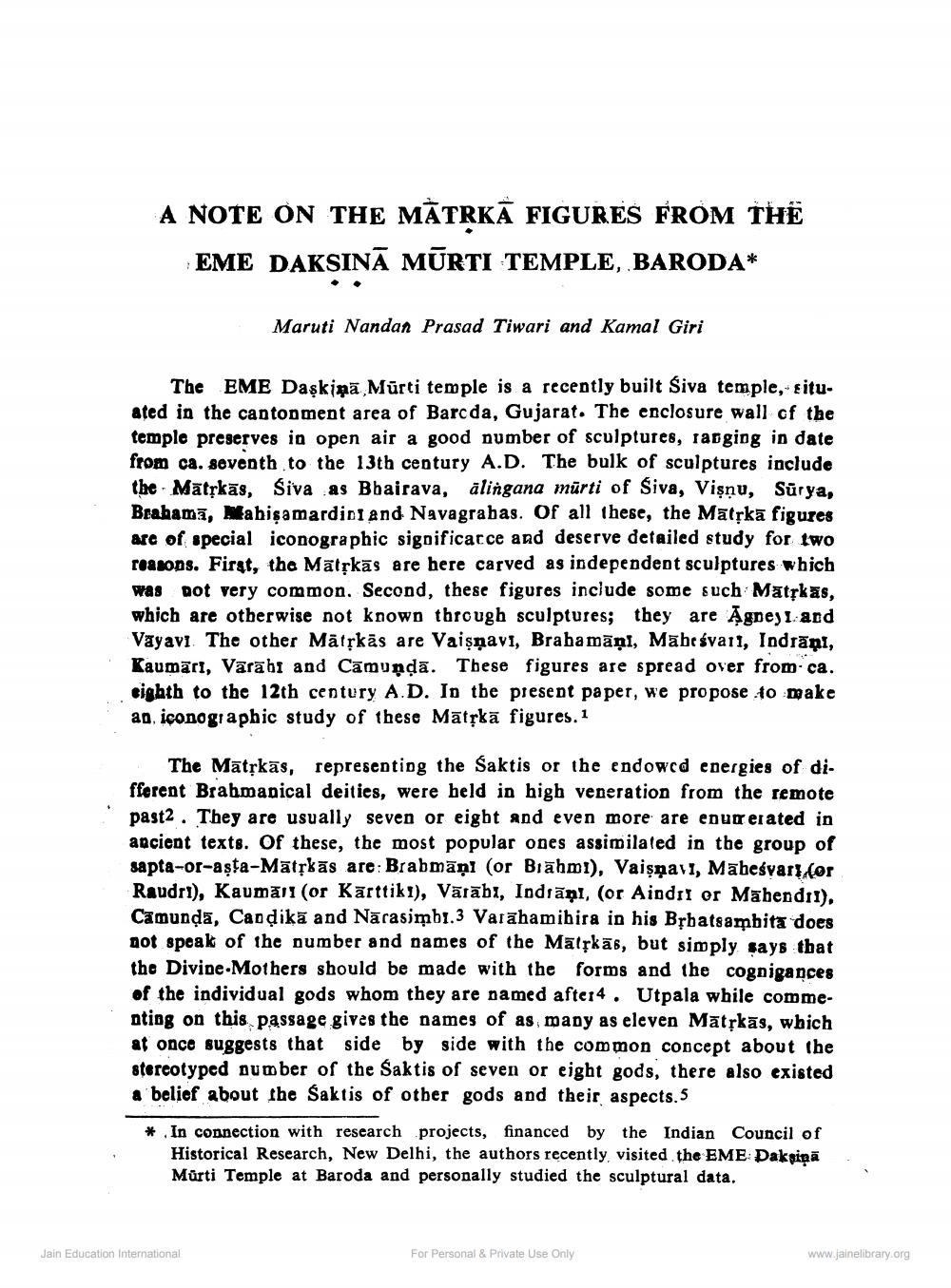________________
A NOTE ON THE MĀTRKĀ FIGURES FROM THË
EME DAKSINĀ MŪRTI TEMPLE, BARODA*
Maruti Nandan Prasad Tiwari and Kamal Giri
The EME Daşkinā Mūrti temple is a recently built Siva temple, situated in the cantonment area of Barcda, Gujarat. The enclosure wall of the temple preserves in open air a good number of sculptures, tanging in date from ca. seventh to the 13th century A.D. The bulk of sculptures include the Mātrkās, Siva as Bbairava, alingana mūrti of Siva, Vişnu, Sürya, Brahama, Mabisamardini and Navagrabas. Of all these, the Mātrka figures are of special iconographic sigoificarce and deserve detailed study for two Coasons. First, the Mātņkās are here carved as independent sculptures which was not very common. Second, these figures include some such Matrkas, which are otherwise not known through sculptures; they are Agneyl and Vayavi The other Mātrkās are Vaişņavi, Brahamāṇi, Mābesvain, Indrāni, Kaumari, Varabi and Camunda. These figures are spread over from. ca. eighth to the 12th century A.D. In the present paper, we propose to make an, iconographic study of these Mātņkā figures. 1
The Mātrkās, representing the Saktis or the endowed energies of different Brahmanical deities, were held in high veneration from the remote past2. They are usually seven or eight and even more are enurrerated in ancient texts. Of these, the most popular ones assimilated in the group of sapta-or-aşta-Mātkās are: Brabmāņi (or Brāhmi), Vaisnavi, Mabesvartcor Raudri), Kaumāni (or Kārttiki), Vārābi, Indiāņi, (or Aindri er Mahendi), Camunda, Candika and Narasimbı.3 Varahamibira in his Brbatsambita does not speak of the number and names of the Matrkās, but simply says that the Divine-Mothers should be made with the forms and the cognigances of the individual gods whom they are named after 4. Utpala while commenting on this passage gives the names of as many as eleven Mātņkās, which at once suggests that side by side with the common concept about the stereotyped number of the Saktis of seven or eight gods, there also existed a belief about the Saktis of other gods and their aspects.5 * In connection with research projects, financed by the Indian Council of
Historical Research, New Delhi, the authors recently visited the EME Dakpiņā Mürti Temple at Baroda and personally studied the sculptural data.
Jain Education International
For Personal & Private Use Only
www.jainelibrary.org




